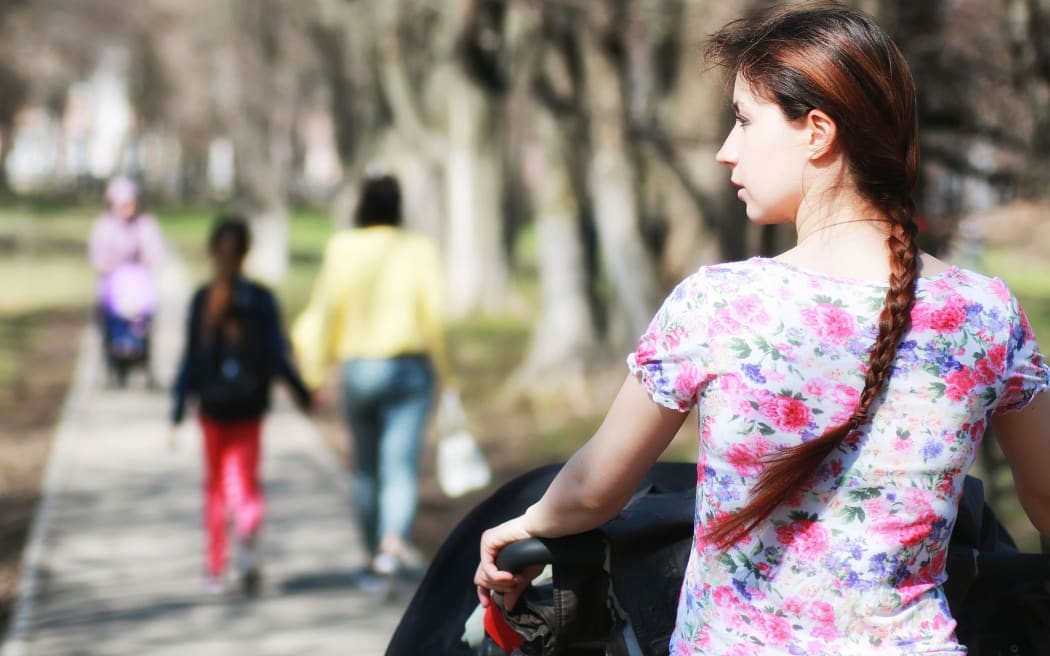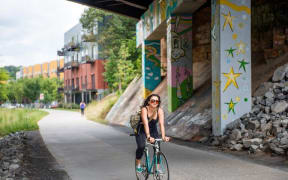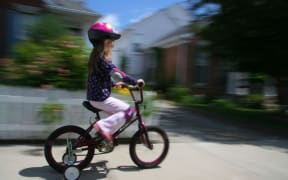Urban planner Katie Matchett contends we’ve built transportation systems that discount women’s travel needs and our communities are the worse for it.

Photo: alexkich/123RF
Matchett tries to walk or bike with her two children in her home city of San Diego, California, as much as possible.
The pedestrian advocate likes to call herself an ‘indicator species’ for good urban design and good transportation design.
Poor design puts pedestrians in danger of being hit by cars, discourages walking and makes it harder to travel with children and get errands done, she says.
“Often I’ve got a big double-wide stroller and I’m trying to walk along a footpath and perhaps it’s not wide enough to accommodate me,” Matchett says.
“Or maybe the crossing isn’t safe enough for my kids. When we design our transportation system in that way that doesn’t favour women’s travel along footpaths I really see that as a feminist issue.”
If footpaths can accommodate someone pushing a wide stroller, they’re also likely to work for people in wheelchairs and other footpath users, she says.
“If we don’t walk, but just drive everywhere, that’s not good for our health. Walking is also really good for community building and mental health.”
Matchett says gender has come into play in the way transportation systems are designed. They’ve been focused on commuting, and that hasn’t served the needs of women.
“Often men are travelling more to commute whereas women are doing more household-serving trips or child-serving trips where we’re running the errands or taking kids to school.”
One way of making those types of trips more possible on foot or by bike is to bring shops and childcare centres close to where people live or work.
“When you have a business that’s within a community that’s very walkable and that’s very bikeable it tends to do better than some of these shops that are further out.
“We do see a correlation between walkable and pedestrian-friendly neighbourhoods and strong businesses. We can build these great neighbourhoods and people will want to come to them.”
Matchett says San Diego business owners have objected to cycle lanes in front of shops, preferring parking spaces, but data shows having a cycle lane is better for businesses.
One of the challenges is that there’s not a great deal of data on how people get around when they’re not driving, she says, and she’s involved in gathering information that can be used in discussions with local decision-makers.
Atlanta's two-wheel revolution
How do you make a city cycle-friendly? Jenn Graham talks about how she helped the auto-centric US city of Atlanta become a bonafide bike hub. Audio
Children cycling on footpaths "a no brainer"
MPs are currently considering a petition pushing for those under 14 years old to ride on footpaths. Critics say they pose a danger to other footpath users, but Cycling Action Network's Patrick Morgan… Audio
Elderly pay when cyclists use footpaths - advocate
Dr Ben Rossiter from Victoria Walks presents a pedestrians perspective on the campaign to change the law to allow children and those aged over 65 to ride their bikes on our footpaths. Can walkers and… Audio




